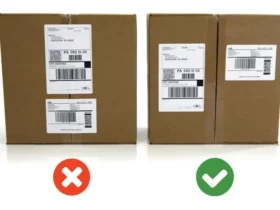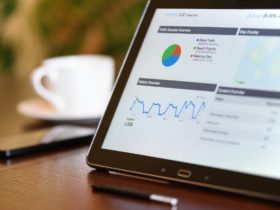If you have an eCommerce business, you’re always looking for ways to increase profits, maintain quality relationships with your customers, and gain new customers.
It can seem like a never-ending job, but there are ways to make it easier, and save time. Ecommerce marketing automation continue to be easier to automate, saving you time and money.
And there are ways to do that without alienating customers.
After all, your customers are likely savvy enough that they’re used to conducting business online, including via email.
Emails, newsletters and blog links are commonplace, and email marketing is now the way many of us conduct our shopping, gather our news, and get inspired.
This means bug implications for you and your eCommerce business.
Automated workflows can help you achieve the following:
- Maximize your marketing budget.
- Boost conversions.
- Increase repeat purchases.
- Augment the lifetime value of each customer.
So let’s look at the 6 best marketing automation workflows for eCommerce.
1. Onboarding Customers With A Welcome Email Campaign
One of the easiest and most effective automated workflows is a welcome email. It’s essential that you have a successful welcome email campaign.
Think about it.
When a customer signs up to receive an email, they expect to receive it and are motivated to read it, so these emails are likely to have the highest open rate.
Automate the process to send an email as soon as the customer signs up, providing them the information they need.
You’ve now given yourself a compelling way to engage new customers and show value to them.
This will have an impact on ROI, as these emails are most likely to be clicked on and opened.
Important things to consider in your welcome email campaign:
- This is an introduction to your brand, an opportunity to make a great first impression, and a chance to make the customer feel part of a “tribe.”
- This is an occasion when you can showcase your top picks or best product categories. You can also provide relevant content to showcase your business as a leader in the industry.
- Include information on the frequency of emails, so customers know what to expect.
- If you want, this is also a chance to promote your presence on social media channels like Twitter or Instagram.
- You can highlight any specials, and provide details on shipping or return policies, to invite the customer to buy. The “reward” of a discount for signing up is a powerful incentive to make that first purchase.
- Be sure to include a call to action to visit your online store.
- Be sure to get yourself acquainted with rules of business correspondence by email.
2. Post Purchase Campaign
Automating an email following a purchase is another powerful opportunity to connect with your customers.
While many would think that a “thank you for purchasing” message is enough to include in such an email, this is an opportunity to connect more deeply with customers.
This is a chance to increase the lifetime value derived from that customer.
It’s also a chance to showcase your brand and build loyalty.
Here are some additional messages to consider when you automate a post-purchase email:
- Thank customers for purchasing (we didn’t say not to include this!).
- Confirm that payment was processed.
- Include any information on shipping times.
- Make additional product recommendations (“Since you bought X, you may be interested in Y”).
- Ask customers to share their purchase on social media, by including a “share” button.
- Include visuals of your brand. Make your store memorable.
3. Abandoned Cart Recovery Automation
Another easy and powerful automation is abandoned cart recovery.
Here’s how it works.
Let’s say a customer visits your online store and places an item in the cart.
They leave the site before completing the purchase.
You automate a process by which they receive an email to remind them of the product and encourage them to return and purchase it.
After all, they’ve already thought about making a purchase. They may have abandoned the cart for reasons completely unrelated to your product, like a distraction or a web crash.
In order to be successful, you’ll need to gather the customer email early in the purchasing process.
The reminder email can be triggered at a set time frame, such as 24 hours, with another reminder several days later.
You can include photos and descriptions of the item. You can even consider a bonus discount if the purchase is completed in a set timeframe.
You can also think about highlighting special aspects of your eCommerce store, such as:
- Your shipping costs – or offer free shipping if the customer spends a certain amount of money.
- Your returns policy.
- Your warranty.
Be sure to set up an automation that lets you know if the customer has returned to the store, such as a thank you page that appears if they do make a purchase.
Then automate a process that sends another message if they don’t visit the store and buy.
You can even consider running a retargeting advertising campaign, along with the email campaign, that will be sure to reach customers who are considering making a purchase.
4. Qualifying Leads
Not all customers are created equal, and it’s important you understand that. In the world of eCommerce, you never get to meet your customers, so you want to understand them too.
Some customers will be regular purchasers, and others may sign up for emails and never look at them.
Understanding the differences in customers allows you to focus your resources in different ways.
For instance, you may choose to focus on loyal customers, or you may decide to focus efforts on winning back disengaged customers.
The way to get to know your customers is through qualifying leads, with certain criteria like customer engagement.
Lead qualification lets you qualify your leads based on different criteria, such as their engagement. Best of all, it can be done automatically.
But before you can start, you need to develop a tagging and scoring plan. You can then assign tags and scores to your leads based on the actions they take.
It could be something as simple as opening your email, visiting your product page, or making a purchase.
Points are assigned to customers based on their actions, and automated emails can be triggered based on those points.
For instance, you can establish a threshold of points based on purchases.
Customers who make several purchases, and achieve the threshold of points, can receive an automated email with an offer for a discount, free shipping, or another variation on a loyalty program.
5. Win Back Campaign Automation
You’ll always have customers who engaged with you at the outset. The relationship started out rosy.
They signed up.
They read your welcome email.
They may be even made an initial purchase.
Then, they became disengaged.
A win-back campaign is one way to attempt to re-engage customers. Using an automated workflow as discussed under “qualifying leads” allows you to identify those customers and follow up to try to win them back.
You can do that by providing them with an enticing offer in an email.
You can also give them the option to “click” to continue to receive emails, to change their preferences to receive fewer emails, or to unsubscribe if they don’t want to receive any emails.
Being genuine with your customers is never a bad thing.
If you are providing the option to “unsubscribe,” be sure to include the option to follow you on social media so that you can still stay in touch with them if they decide to unsubscribe. While you may lose some people from your customer email list, it’s better for you to have a “clean” list with those customers that want to be engaged with you.
6. Think Beyond Sales
Automated emails don’t just have to be about generating sales. Creating brand loyalty can happen with emails that cover different kinds of topics, and keep your customers engaged with your brand on a different level.
Here are some ideas.
Showcase your business as a leader in your industry by sharing “thought leadership” articles. For instance, if you produce re-usable shopping bags, articles on the environmental damage caused by single-use plastic bags will be of interest to your customers.
Share exclusive information on new product launches. You can even provide loyal customers with an option to pre-buy before other customers have the chance to purchase.
Invite customers to review your products. People generally like to share their opinions, and by gathering reviews from happy customers, you are providing valuable information to potential new customers. This is how you make your business stand out in a competitive market.
Final Thoughts
Running an eCommerce business presents some unique challenges compared to bricks and mortar stores.
In-person shopping gives you the opportunity to get to know customers face-to-face or to have mechanisms to interact with them when they visit your store.
But eCommerce also provides great opportunities to connect with customers in other ways.
With the explosion in popularity of online shopping, your customers are increasingly willing and able to interact with you electronically.
Automated workflows can support your marketing efforts, in turn increasing the profits for your eCommerce business.
Our 6 best automation workflows will set your business in the right direction.













